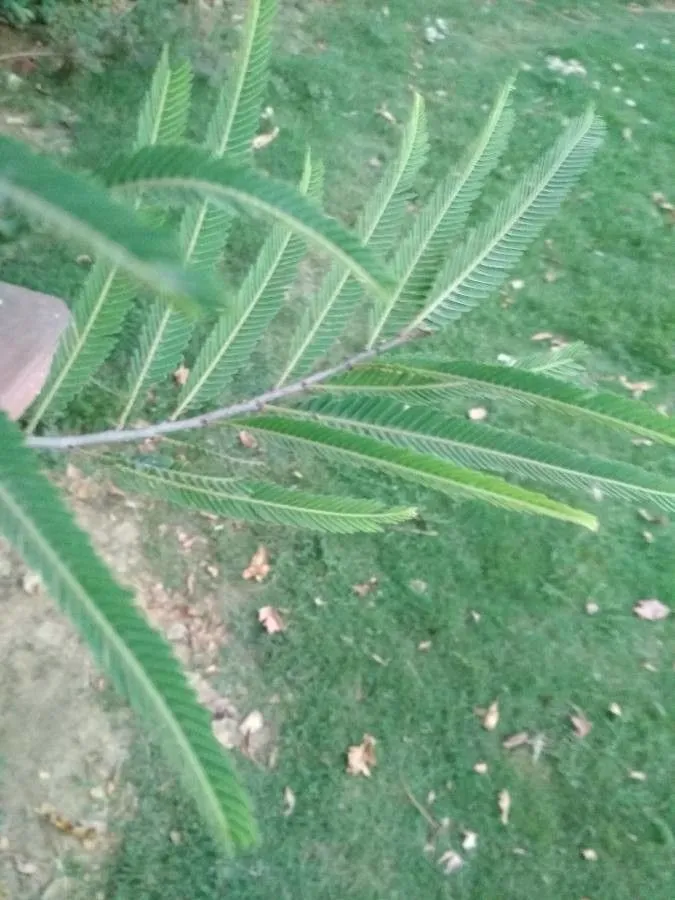
Author: L.
Bibliography: Sp. Pl.: 982 (1753)
Year: 1753
Status: accepted
Rank: species
Genus: Phyllanthus
Vegetable: Unknown
Observations: Trop. & Subtrop. Asia
Indian-gooseberry, scientifically known as Phyllanthus emblica, is a prominent species native to tropical and subtropical regions of Asia. This deciduous tree belongs to the Phyllanthaceae family and has been widely recognized since its formal description in 1753 by the renowned botanist Carl Linnaeus.
The Indian-gooseberry, or amla as it is commonly known in many Asian cultures, is revered for its numerous health benefits and rich nutritional profile. The tree is characterized by its small, greenish-yellow fruits that are spherical, smooth, and hard. These fruits are highly valued in traditional medicine for their exceptional vitamin C content and potent antioxidant properties.
In terms of appearance, the Indian-gooseberry tree typically reaches a height of about 8 to 18 meters. Its branches spread widely, creating a dense canopy. The leaves are light green, simple, and arranged alternately along slender branchlets, giving them a feathery appearance.
Indian-gooseberry has been traditionally used in various forms, such as fresh fruit, dried fruit, juice, or oil, to promote health and wellness. It is a crucial ingredient in many Ayurvedic and Unani formulations and is believed to help in managing diabetes, improving digestion, and enhancing skin and hair health due to its anti-inflammatory and anti-aging properties.
The tree thrives in a variety of soil types, from sandy to clayey, making it highly adaptable to different climatic conditions across tropical and subtropical Asia. The ability to grow in such diverse environments underscores its resilience and the wide availability of this valuable fruit.
Indian-gooseberry’s versatility and numerous health benefits have made it an integral part of wellness practices and culinary traditions throughout the regions where it is found. Whether consumed as a dietary supplement, incorporated in skincare regimes, or enjoyed as a refreshing fruit, Phyllanthus emblica continues to be celebrated for its remarkable benefits and enduring significance.
Deu: amblabaum
Eng: indian-gooseberry, emblic, emblic myrobalan, indian gooseberry
Swe: emblika
Fra: groseillier de ceylan, myrobalan emblic
Spa: mirobalano, nelí
Urd: amla
San: amla
En: Indian-gooseberry, Emblic, Emblic myrobalan, Indian Gooseberry, Amla, Gooseberry
Ar: Amlag, As sanânir
Fr: Groseillier de Ceylan, Myrobalan emblic
De: Amblabaum
Sa: Amla
Es: Mirobalano, Nelí
Sv: Emblika
Ur: Amla
Taken Jan 31, 2021 by mohamed mohamed (cc-by-sa)
Taken Aug 20, 2020 by SANTOSH YADAV (cc-by-sa)
Taken Aug 23, 2020 by sunita kataria (cc-by-sa)
Taken Jul 20, 2020 by Jayesh Nikwade (cc-by-sa)
Taken Mar 28, 2020 by S R (cc-by-sa)
Taken Aug 20, 2020 by SANTOSH YADAV (cc-by-sa)
Taken Aug 12, 2020 by anilkumar ayyappan (cc-by-sa)
Taken Mar 28, 2020 by S R (cc-by-sa)
Taken Aug 23, 2019 by jan verburg (cc-by-sa)
Taken May 23, 2020 by Nik (cc-by-sa)
Taken Nov 13, 2015 by Tela Botanica − Jean – Marie Sauzier (cc-by-sa)
Taken Sep 28, 2021 by Himanshi Sharma (cc-by-sa)
Taken Nov 23, 2019 by Dieter Albrecht (cc-by-sa)
Taken Jun 29, 2022 by MG LASER (cc-by-sa)
Taken Mar 28, 2020 by S R (cc-by-sa)
Taken Nov 23, 2019 by Dieter Albrecht (cc-by-sa)
Taken Feb 6, 2022 by Dr Sandeep Kumar Yadav (cc-by-sa)
Taken Oct 12, 2021 by Gomes Alex (cc-by-sa)
Taken Jun 29, 2022 by MG LASER (cc-by-sa)
© copyright of the Board of Trustees of the Royal Botanic Gardens, Kew.
© copyright of the Board of Trustees of the Royal Botanic Gardens, Kew.
© copyright of the Board of Trustees of the Royal Botanic Gardens, Kew.
Taken Nov 23, 2019 by Dieter Albrecht (cc-by-sa)
Taken Dec 20, 2021 by Chandru Chawla (cc-by-sa)
Taken Feb 6, 2022 by Dr Sandeep Kumar Yadav (cc-by-sa)
Taken Nov 9, 2022 by Shahabuddin Hridoy (cc-by-sa)
Taken Nov 13, 2015 by Tela Botanica − meunier (cc-by-sa)
Taken Nov 13, 2015 by Tela Botanica − Hugo SANTACREU (cc-by-sa)
Family: Myrtaceae Author: (F.Muell.) K.D.Hill & L.A.S.Johnson Bibliography: Telopea 6: 402 (1995) Year: 1995 Status:…
Family: Rubiaceae Author: Pierre ex A.Froehner Bibliography: Notizbl. Bot. Gart. Berlin-Dahlem 1: 237 (1897) Year:…
Family: Sapindaceae Author: Koidz. Bibliography: J. Coll. Sci. Imp. Univ. Tokyo 32(1): 38 (1911) Year:…
Family: Asteraceae Author: A.Gray Bibliography: Pacif. Railr. Rep.: 107 (1857) Year: 1857 Status: accepted Rank:…
Family: Fabaceae Author: Medik. Bibliography: Vorles. Churpfälz. Phys.-Ökon. Ges. 2: 398 (1787) Year: 1787 Status:…
Family: Aspleniaceae Author: (Cav.) Alston Bibliography: Bull. Misc. Inform. Kew 1932: 309 (1932) Year: 1932…